How to putty OSB boards and whether to do it
Today, frame housing construction using OSB-plates and SIP-panels is very popular. These materials, like any other natural origin, need a protective finish.
Outside, such houses are most often faced with hinged facade systems, and inside, OSB plastering is used for subsequent decorative finishing - wallpapering or painting. In this article, we will talk about the technology of this process and the materials that can be used.
The content of the article
About Material Compatibility
OSB boards are a multilayer material made of wood shavings glued under the influence of high pressure and temperature with synthetic resin. Each layer has a different orientation, which makes the plate highly resistant to deformation.
Working with this material requires certain knowledge and skills. If you are not sure that you can cope with the finish on your own, it is better to trust an experienced master.
Despite the high content of artificial substances, 80-90% of the boards are made of wood, therefore they have many properties of a natural material. One of them is the ability to absorb moisture.
It is it that raises doubts as to whether it is possible to putty the OSB plate, to glue wallpaper on it (seeWall decoration in wallpaper in the correct execution) or coated with waterborne dispersion paints. After all, both paint, and wallpaper glue, and putty can lead to swelling of the material, an increase in its size and deformation.
Note. Oriented particle boards are available in varying degrees of resistance to moisture. The most reliable are sold with the marking OSP-3. They are used for exterior cladding and in rooms with high humidity.
Many developers are quite happy with the natural look of the material, especially when it comes to a country house or utility room, so they are content with simply covering the surface with varnish.
But what if decorative finishes are required? Is it possible to putty OSB (seeWall decoration with OSB slabs and roofing), which mixtures to use and how to do it right?
The answer to the first question is unequivocal: it is possible. It is simply advisable to use non-water based mixtures to avoid deformation of the sheets.
OSB finish features
Let's look at the technology of puttying slabs and outline the range of materials that can be used for this.
The choice of putty and other materials
Before filling the OSB plate, the surface must be prepared: sanded to eliminate defects and primed.
Tip. It is easier to use already polished boards in the production. Their price is not much higher, and it takes much less time and effort to finish.
The question immediately arises about the primer - which one to choose. Of course, the one intended for wooden surfaces (seePrimer wood - process features) and does not contain water. For example, drying oil or soil based on glyphthalic varnish.
Tip. The greatest moisture-absorbing ability has the ends of the plates. It is advisable to treat them with a protective primer before mounting the sheets, since then it will be impossible to do this.
We proceed to the selection of the main material. You need to choose from those compounds that are designed to finish wooden substrates and have an oil, adhesive, synthetic base. Mixtures for brick or concrete with a high degree of probability will not last long on your surface.
The most suitable are the following formulations sold in ready-to-use form:
- Special acrylic putty for OSB boards, also intended for leveling any wood and wood-based substrates.
- Nitro-putties ASH-24, ASH-32, MBSH. They are made from resins and cellulose ethers with various fillers and plasticizing additives. To achieve the desired consistency, they can be diluted with solvents.
- Oil and glue putties - these are compositions based on drying oil, varnishes and glue with the addition of chalk, thickeners, modifying additives. Divorced by drying oil.
Also for finishing OSB use special paints with fillers.
Regardless of the composition, putty for OSB boards should have the following properties:
- Good adhesion to a smooth, resin coated base surface;
- A small degree of shrinkage during drying with a low probability of cracking;
- High durability of the created coating and its suitability for subsequent decorative finishing;
- The absence of solid fillers in the mixture, homogeneous consistency.
In order to avoid cracks during the decoration of oriented particle boards, experts recommend reinforcing with elastic materials. The best option is a paint (repair) non-woven.
To stick it you will need glue for the corresponding wall coverings.
Putty Technology
All the necessary materials are selected and purchased, you can get to work.
There is no difference how to putty OSB for wallpaper or for painting, the procedure is the same:
- The first step is to apply a primer with hermetic properties, creating a film on the surface. It will protect subsequent coatings from exposed stains from tar, essential oils and tannins contained in wood.
- Further, the instruction requires a technological break in work to dry the surface. Its duration depends on the type of primer and can be from 4 to 12 hours.
- The second step is the direct application of putty. Work is carried out only at a positive air temperature and its humidity of not more than 60%.
How this is done can be studied in detail by watching the video in this article or by reading other articles on the site devoted to puttying walls and ceilings.
- The second technological break is arranged to dry the putty layer.
- The third step is grinding the surface to eliminate minor defects and make it smooth.
- The fourth step is reinforcement. Non-woven overlap is glued, but in order to avoid thickenings at the joints, a double cut is made in this line along the ruler, excess material is removed, and adjacent canvases are fixed butt.
Judging by the description, the process is simple and you can handle it with your own hands. However, theoretical knowledge alone is not enough to finish such a whimsical material, therefore, in the absence of experience in such work, it is better to use the services of a professional.
Conclusion
We tried to answer the question most fully and in detail, how to putty the OSB and what materials to use for this. This is not necessary if you do not plan to hide the structure of the material, but such a finish is needed for paint or wallpaper - it will protect the base from moisture and allow you to create a high-quality decorative coating.
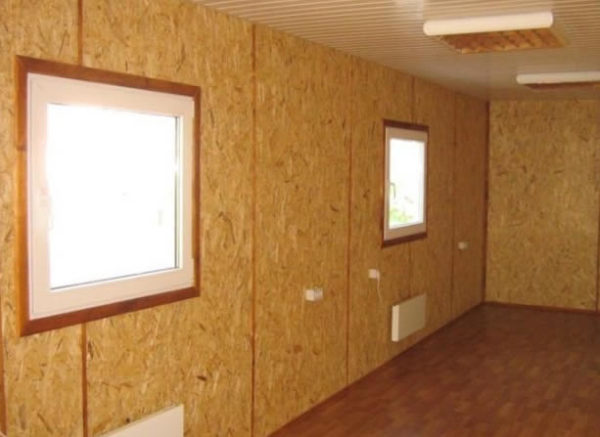

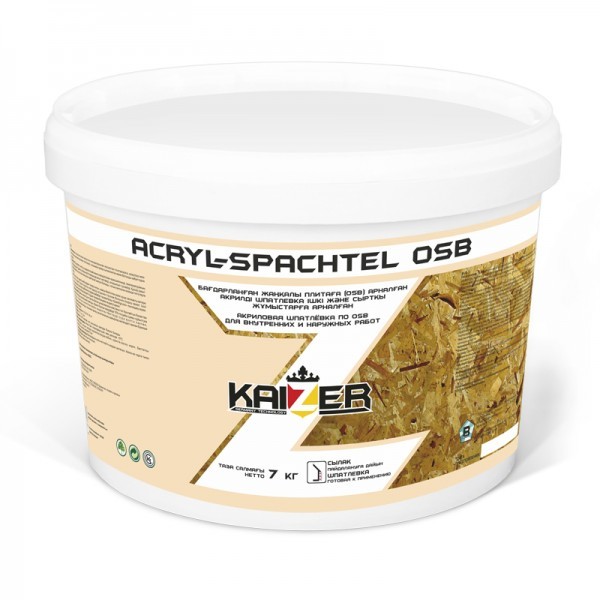
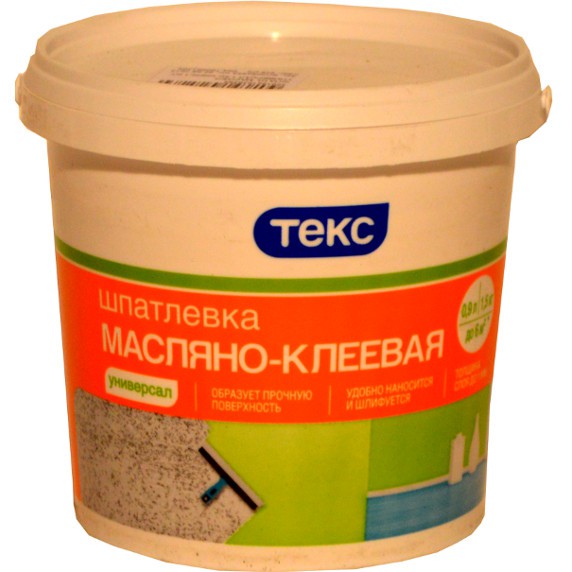
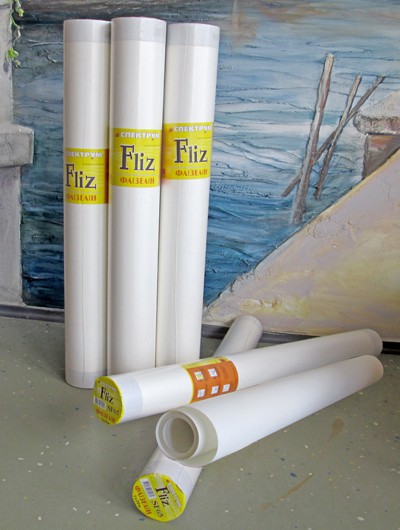
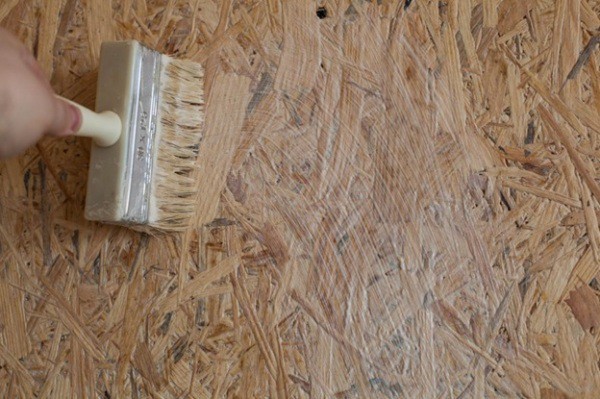


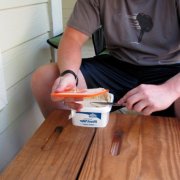
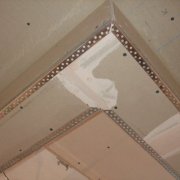
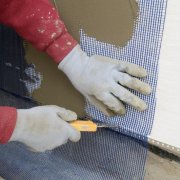
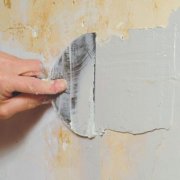
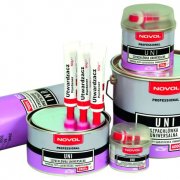
Hello, you are talking very beautifully, correctly. But do not say anywhere before the putty whether there is a difference on which side the OSB is sewn up, front or back.
Thank you, Anatolyevich, extremely accurate and essentially information.